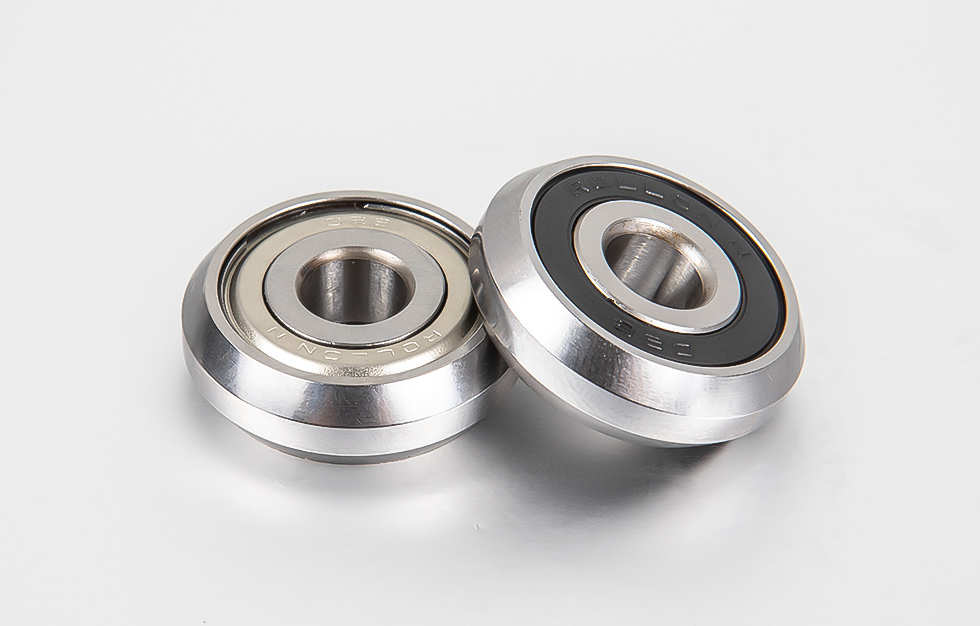News
Ningbo Hardchn bearing Co., Ltd.
Contact Us
Ningbo Hardchn bearing Co., Ltd.
ADD:No.501 Shizhu Rd, Linyu Foreign Investment Park, Jiaochuan Street, Zhenhai District, Ningbo city, China.
Tel:0086-574-86365365
Mobile:0086-(0)13858288142
Fax:0086-574-86454078
The characteristic frequency of rolling bearing failure […]
The characteristic frequency of rolling bearing failure is the vibration frequency produced by bearing failure. There are four typical bearing fault characteristic frequencies, namely: BPFO- outer ring fault characteristic frequency; BPFI- inner ring fault characteristic frequency; BSF- rolling element fault characteristic frequency and FTF- cage fault characteristic frequency.
Characteristics of the characteristic frequency of rolling bearing failure
1. The failure frequency of the bearing is different from other failure frequencies;
2. The bearing failure frequency is a non-integer multiple of the speed frequency;
3. The sum frequency of the fault frequencies of the inner and outer rings = "bearing rolling element passing frequency" (number of rolling elements X RPM);
4. The fault frequency of the bearing inner ring is often accompanied by a sideband of 1 X speed frequency;
5. The frequency amplitude of the bearing outer ring failure is higher than the amplitude of the bearing inner ring failure frequency;
6. Bearing failures are generally the frequency of inner ring or outer ring failures before the rolling elements and cages fail;
7. Bearing cage failure frequency (FTF) usually does not appear at its fundamental frequency;
8. When the rolling element itself fails, not only the rolling element failure frequency (BSF), but also the cage failure frequency (FTF) will often occur;

9. When the bearing cage is broken, the rolling element rotation failure frequency may occur;
10. When more than one rolling element is faulty, the number of faulty rolling elements x the frequency of the characteristic frequency of the rolling element failure will occur. If there is a failure on the 5 balls or rollers, the frequency of 5X BSF will often appear;
11. The allowable vibration amplitude of the bearing failure frequency cannot be absolutely limited. It is not only related to the specific machine and speed, but also has a lot to do with the path of bearing failure frequency transmission. The most obvious sign of bearing damage is the existence of harmonic frequencies of the bearing failure frequency, especially if these frequencies are accompanied by 1X speed frequency or other bearing failure frequency sidebands, the bearing should be replaced as soon as possible.
12. The bearing condition of the evaluated low-speed machine:
It is recommended to collect both time-domain waveforms and (FFT) spectrum when evaluating machine bearing conditions, especially when the speed is less than 100 rpm. When the speed is very low, the pulses that occur when the rolling elements roll through the defects on the inner and outer rings of the bearing do not have enough energy to produce a clear frequency in the FFT spectrum that can be detected, but it may still be clearly seen in the time domain waveform.
13. The vibration sensor is placed as close as possible to the bearing area of the bearing, especially when the bearing only supports radial load.
14. Improper bearing load and installation problems
If the bearing load is improper or the installation is improper, for example, when installing 62 Series Ball Bearings, if the interference fit between the bearing and the bearing seat is too tight, the bearing will “click” into the bearing seat, causing the internal clearance of the bearing to change, and the rolling elements will be forced Press against the inner and outer rings of the bearing. When this happens, the bearing will immediately produce the fault frequency of the outer ring and inner ring of the bearing when starting.
Excessive load was applied to the bearing due to improper installation. Although the actual damage may not have occurred yet, if this failure problem is not detected and measures are taken to correct it, the bearing will be damaged long before its intended life.
15. Frequency of poor bearing lubrication
The characteristic is that there are 3 or 4 spikes in the range of 900 to 1600 Hz, and the frequency difference between the spikes is 80 to 130 Hz. A well-lubricated bearing may also include these frequency components, however, their amplitude is very small, about 1.27 mmn/s or less. When the lubrication is poor, the amplitude increases to 2.54 to 5.08mm/s.